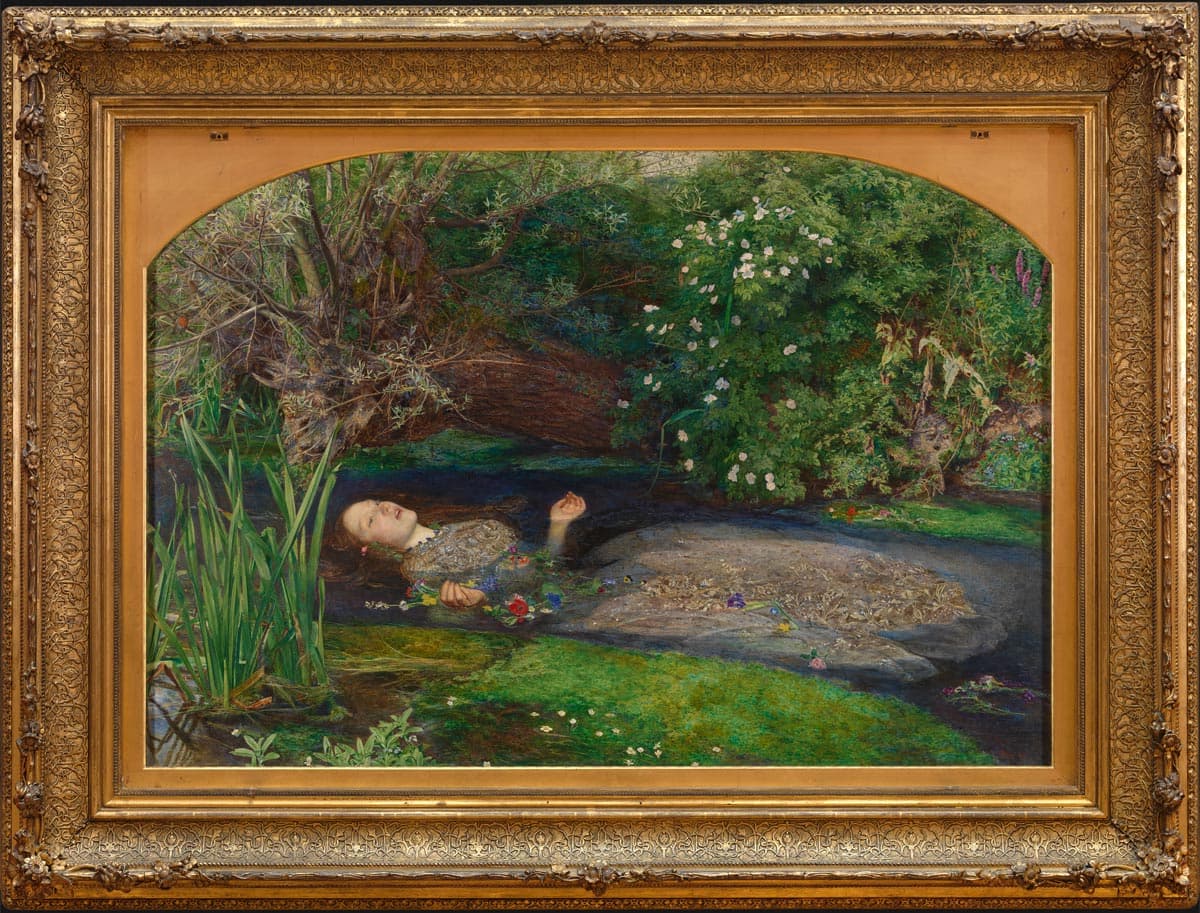Reimagining Ophelia
In this live-action film clip, with music by Sarah Blasko, we delve deeper into the world of the inspiration for John Everett Millais' renowned painting of Shakespeare's tragic heroine. Immerse yourself in the world of love and desire.
Millais's image of the tragic death of Ophelia, as she falls into the stream and drowns, is one of the best-known illustrations from Shakespeare's play Hamlet.
The Pre-Raphaelites focused on serious and significant subjects and were best known for painting subjects from modern life and literature often using historical costumes. They painted directly from nature itself, as truthfully as possible and with incredible attention to detail. Here, we recreate the final scene of Ophelia's life.
Produced and directed by Crux Media | Music: Here by Sarah Blasko from I Awake | Based on : John Everett Millais Ophelia 1851–52, oil on canvas. Image courtesy Tate.
Visit Ophelia
John Everett Millais' Ophelia is one of the Tate's most visited paintings. Now, together with the Lady of Shalott, it leaves the Tate for the first time as part of Love and Desire: Pre-Raphaelite Masterpieces from the Tate. You can see these extraordinary 19th century works up close, exclusively at the National Gallery of Australia.
Behind-the-scenes
at Tate Britain
Come behind the scenes at the Tate stores as more than 40 incredible paintings are readied for transportation to Australia.
Join National Gallery of Australia Director, Nick Mitzevich at the Tate Britain, revealing the world-first exclusive coup for the NGA as Ophelia and The Lady of Shalott leave the walls of the Tate together for the first time.
Learn more
about Ophelia
Bianca Winataputri, NGA Assistant Curator of International Painting, Sculpture and Decorative Arts explores how Ophelia's fate is entwined with Pre-Raphaelite Elizabeth Siddal.
'Therewith fantastic garlands did she make
Of crowflowers, nettles, daisies, and long purples, …
When down her weedy trophies and herself
Fell in the weeping brook. Her clothes spread wide,
And mermaid-like awhile they bore her up,
Which time she chanted snatches of old tunes,
As one incapable of her own distress …'
Queen Gertrude in Hamlet, Act IV, Scene VII
Ophelia's drowning in Shakespeare's Hamlet is not performed on stage and can only be imagined through the words of Queen Gertrude. Driven mad after her father is murdered by her lover, Hamlet, Ophelia drowns. Her death, it seems, is an instance of beauty, focusing above all else on the flowery setting and her 'mermaid-like' garment. This aestheticised portrait of her drowning renders Ophelia as an object of beauty, and her death a romantic tragedy.
Read more on Medium


